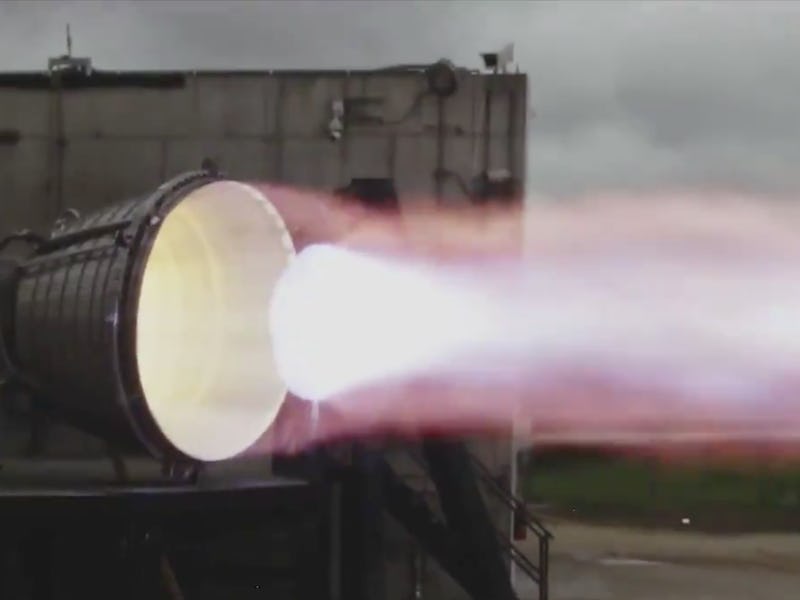SpaceX Starship: incredible video shows the vacuum Raptor engine’s power
The space-faring firm's rocket engine is taking on new challenges during its development.

Boom! SpaceX puts its upcoming Starship engine through its paces in a video shared Friday, which shows the Raptor engine completing a full-duration test fire at the firm's rocket development facilities.
The 15-second clip, shared via Twitter, shows a new vacuum variant of the Raptor engine during a test at the McGregor, Texas facility. This variant of the Raptor engine will help the Starship travel through the vacuum of space, as opposed to the smaller sea-level variants that have been demonstrated so far.
The new variant is a beast: a previous photo shared by SpaceX showed the new version towering over the previous one, with a relatively tiny human for scale.
It's an exciting step forward in what is possibly SpaceX's most ambitious project. The company is developing the Starship at its Boca Chica facility in Texas, a stainless steel behemoth designed to send up to 100 people or 150 tons into space at a time. The ship will measure around 400 feet tall when paired with the Super Heavy booster.
SpaceX's Raptor, with the sea-level variant on the left and the vacuum variant on the right.
The ship is also destined for big missions. It's designed to be fully reusable, and it's fueled by liquid oxygen and methane. Astronauts could use the ship to fly to Mars, refuel using the planet's resources, and either return home or venture out further, establishing a planet-hopping network along the way. CEO Elon Musk has outlined plans to send the first humans to Mars by the mid 2020s, and establish a full-blown city as early as 2050.
In short, this video could be a glimpse at the engine that will take the first humans to Mars.
The clip shows the impressive "mach diamonds" that form in the wake of the engine. This phenomenon occurs when there's a mismatch of pressure from the gases coming out of the engine and the surrounding atmosphere. The high-pressure gas expands into the low-pressure atmosphere, but then gets forced back due to shock waves. Popular Mechanics explained in 2017 that these diamonds can form behind fighter jets, and they're also possible to make using a home experiment.
So how powerful is this new engine? One measurement would be specific impulse. This measures how much movement you get from each unit of fuel used. NASA's Glenn Research Center explains how teams arrive at that figure, but the important thing to note is that it can be measured in seconds.
A 2013 version of SpaceX's website explained that the Merlin engine used for its current Falcon 9 launches had a specific impulse of 282 seconds for the sea level and specific impulse of 311 seconds for the vacuum. In September 2019, Musk wrote on Twitter that the sea-level Raptor engine is around 350 seconds, and it can reach 380 seconds for the vacuum-optimized variant.
The Starship is expected to feature six engines, while the Super Heavy variant that will help the ship leave Earth is expected to use 28 engines. In short, the emergent ship will have a serious amount of power helping it to meet its goals.
The Inverse analysis – SpaceX seems to be moving ahead with its plans for more ambitious tests. Prototype models of the ship have so far completed hop tests reaching 150 meters or 500 feet into the air. These tests have only used a single Raptor engine: for more difficult tests, like the launch to 20 kilometers, SpaceX is expected to add more engines to meet the challenge.
SpaceX is aiming to complete an orbital test flight sometime next year. The company is then aiming for trips to the Moon, Mars, and beyond with the final ship. This video could be a demonstration of the engine that will power those ships in action.
This article was originally published on